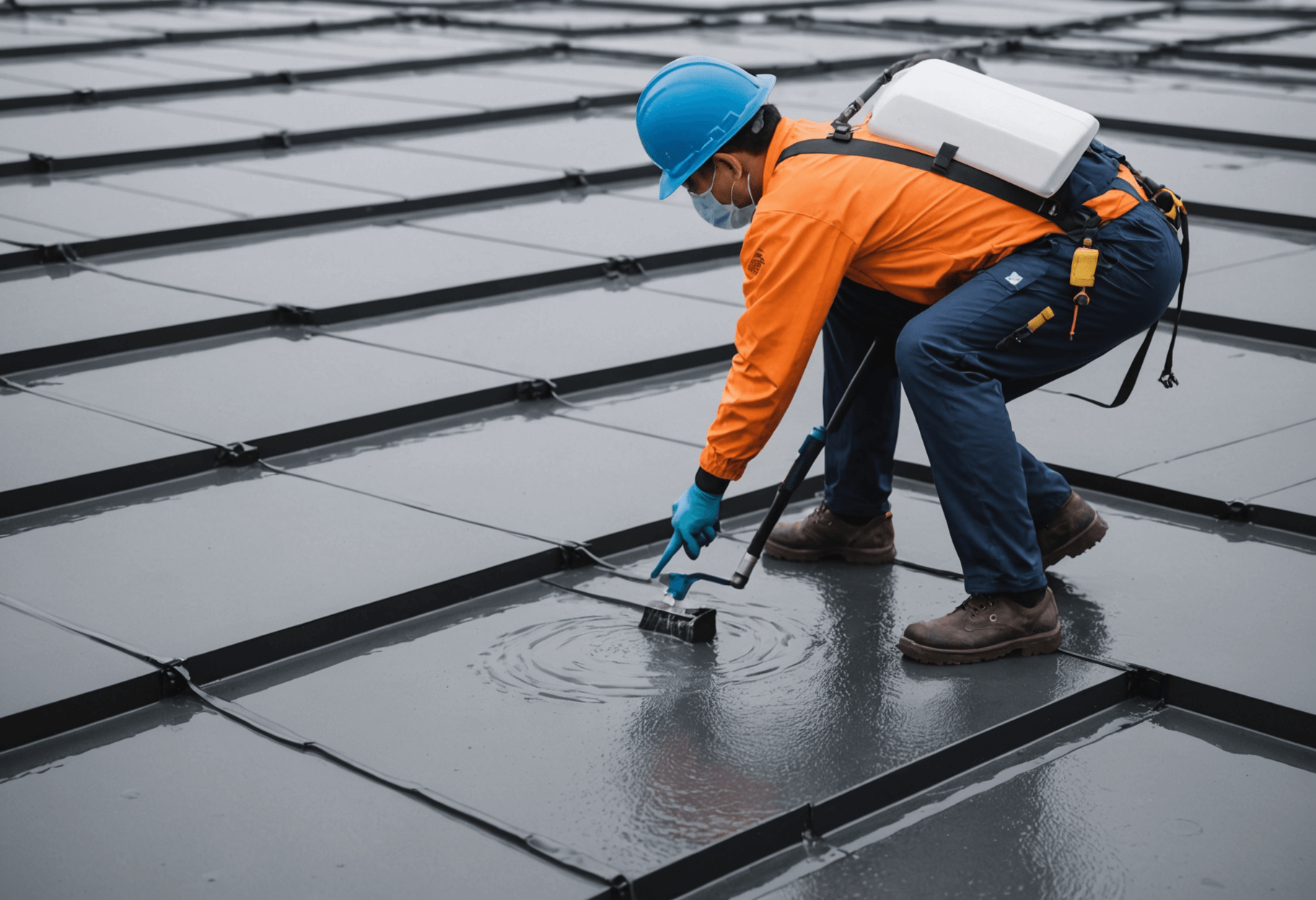Singapore’s tropical climate brings heavy rainfall throughout the year, making it crucial for property owners and architects to focus on effective roof design. A poorly planned roof can lead to water leakage, structural damage, and costly repairs, which disrupt daily life and compromise safety. Proper attention to roof detail design transforms a standard roofing system into a resilient barrier capable of withstanding the challenges posed by intense storms and heavy downpours.
Effective roof detail design is more than just selecting materials; it involves meticulously planning every joint, drainage system, and roofing component to ensure water flows away efficiently. This level of precision not only extends the lifespan of roofing structures but also safeguards the building’s interior against water intrusion. With Singapore experiencing an average of 2,400 mm of rainfall annually, having knowledgeable roof design becomes vital for both residential and commercial properties, including schools, offices, and homes. Well-designed roofs help reduce maintenance costs, prevent mold growth, and protect property value over time.
Understanding the Importance of Roof Detail Design in Singapore
Singapore’s heavy rainfall presents unique challenges for roof construction. When designing roofs, consider factors such as high rain intensity, inadequate drainage, and the possibility of wind-driven rain. These elements require detailed planning to ensure your roof remains a reliable shield against water ingress.
Research shows that water leaks are among the leading causes of roofing failures globally, and Singapore is no exception. Proper roof detail design reduces the likelihood of leaks and structural deterioration. By paying attention to minor details, such as the correct placement of roof vents, gutters, and flashing, property owners can prevent costly repairs and ensure long-term durability.
Key Elements of Roof Detail Design for Heavy Rainfall Areas
Effective Drainage Systems
- Gutters and downspouts: Choose suitable sizes and ensure they are regularly cleaned to prevent blockages. Proper slope and alignment help water flow swiftly away from the roof surface.
- Roof slope: A minimum slope of 15 degrees is recommended for Singapore roofs to facilitate rapid water runoff, reducing pooling and potential leaks.
- Drainage outlets: Strategically placed outlets minimize water build-up and facilitate efficient drainage, especially during heavy storms.
Waterproofing and Flashing
Proper waterproofing prevents water from seeping into the building structure. Vital components such as flashings around chimneys, vents, and joints must be correctly installed and maintained. Incorporating high-quality waterproofing membranes enhances resilience against heavy rain.
The Role of Material Selection in Rain-Resistant Roofs
Choosing the right materials is fundamental to a roof’s ability to withstand Singapore’s weather. Materials like reinforced concrete, clay tiles, or metal roofing are popular options because of their durability and resistance to moisture. Furthermore, selecting materials that have proven longevity in humid environments can save money and extend roof life.
For example, metal roofing with proper coating can reflect heat, reduce thermal expansion, and resist corrosion. Similarly, clay tiles are inherently water-resistant and lightweight, making them a preferred choice for heavy rain areas. The key is to select materials that complement each other and work together to create a seamless, water-tight roof.
Design Considerations for Roof Accessories and Fixtures
Ventilation and Airflow
Proper ventilation prevents the buildup of humidity in the roof space, reducing mold risk and material degradation. Vents should be designed to allow airflow while preventing water ingress during storms.
Roof Penetrations and Joint Details
Every pipe, vent, and electrical conduit passing through the roof requires careful detailing. Use appropriate flashing and sealing techniques to ensure no gaps allow water intrusion. Regular inspections and maintenance are essential to keep these junctions water-tight over time.
The Influence of Wind and Water on Roof Detail Design
Singapore’s climate not only involves heavy rainfall but also strong winds during monsoon seasons. Roof details must be engineered to resist wind uplift and prevent wind-driven rain penetration.
Design strategies include reinforced edge flashings, secure attachment of roof components, and aerodynamic roof shapes that reduce wind resistance. These practices help minimize the risk of damage and water leaks during storms, ensuring safety and longevity.
Professional Consultation and Regular Maintenance
Collaborating with experienced roofing professionals is essential for optimal roof detail design. Experts can identify potential vulnerabilities and recommend suitable solutions tailored to local conditions. Regular inspection and maintenance play equally important roles in maintaining the integrity of the roof.
If your property requires specialized waterproofing, especially in sensitive areas such as Waterproofing for schools in Singapore, engaging specialists can prevent issues before they occur. Routine checks for blocked gutters, damaged flashing, and worn waterproofing layers help detect problems early and extend the roof’s lifespan.
Conclusion: Why Investing in Proper Roof Detail Design Pays Off
In a city like Singapore, where heavy rain is an annual reality, prioritizing detailed roof design is a smart choice for property owners. It ensures your building remains dry, safe, and structurally sound despite relentless weather conditions. From selecting the right materials and designing efficient drainage systems to detailing flashing and roof penetrations, every component plays a part in creating a resilient roof.
Experts agree that investing time and resources into thoughtful roof detail design can significantly reduce maintenance costs and prevent disruptive water damage. It is a proactive approach that saves money in the long run and enhances the comfort and safety of occupants. Whether you own a home, school, or commercial building, consult with experienced professionals to create a roof that stands strong against Singapore’s heavy rainfall. Remember, a well-designed roof is the first step toward a weather-resistant property and peace of mind during the storm season.




